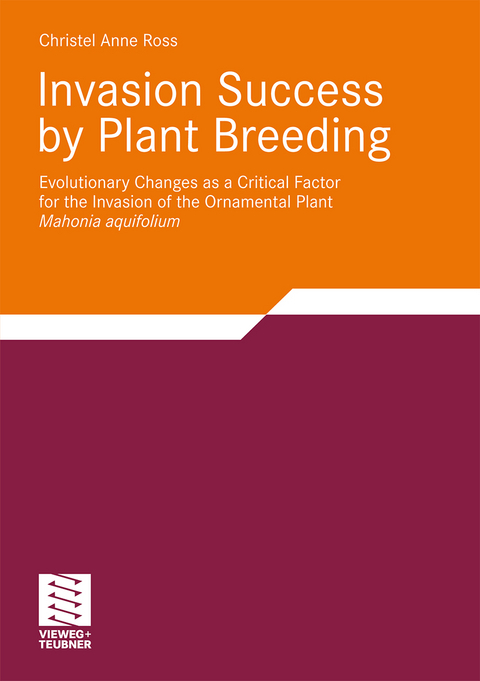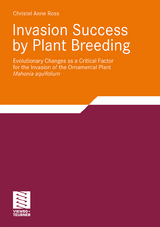Invasion Success by Plant Breeding
Evolutionary Changes as a Critical Factor for the Invasion of the Ornamental Plant Mahonia aquifolium
Seiten
2009
|
2009
Vieweg & Teubner (Verlag)
978-3-8348-0792-2 (ISBN)
Vieweg & Teubner (Verlag)
978-3-8348-0792-2 (ISBN)
Christel has been intrigued by the phenomenon of invasions since her studies as an undergraduate student in botany at Goettingen University where she took several of my courses and where I supervised her diploma thesis. Her diploma thesis already addressed the possible impact of hybridization for the invasiveness of plant species. By using molecular markers, she studied North American and European Rhododendron species. We were also in close contact while she was working on her PhD thesis at the Department of Community Ecology at the Helmholtz-Centre for Environmental Research UFZ in Halle. Having been one of the reviewers of her PhD thesis, I readily agreed when she asked me to write a short preface to this publication. While the main line of research on the role of evolutionary processes for plant invasions has mainly been on the response to a different natural selection pressures exerted by the abiotic and biotic site factors of the new environment, Christel has asked to which degree breeding efforts might have contributed to such pressures. She chose a very apt study object to address this topic, Mahonia aquifolium, a species native to North America and introduced to Europe as an ornamental plant, together with some other species of the same genus. Christel's basic question was whether invasive populations of Mahonia aquifolium in Europe originate from planted cultivars or from hybrids with M. repens und M. pinnata.
Dr. Christel Anne Ross completed her doctoral thesis at the Department of Community Ecology at the Helmholtz-Centre for Environmental Research - UFZ in Halle, Germany. She now works as a junior editor in a specialist publishing house.
Isolation and characterisation of microsatellite markers in the invasive shrub Mahonia aquifolium (Berberidaceae) and their applicability in related species.- Genetic relationships among three native North-American Mahonia species, invasive Mahonia populations from Europe, and commercial cultivars.- Invasive Mahonia plants outgrow their native relatives.- Mahonia invasions in different habitats: local adaptation or general-purpose genotypes?.
| Erscheint lt. Verlag | 26.2.2009 |
|---|---|
| Zusatzinfo | XVII, 105 p. |
| Verlagsort | Wiesbaden |
| Sprache | englisch |
| Maße | 148 x 210 mm |
| Gewicht | 250 g |
| Themenwelt | Naturwissenschaften ► Biologie ► Botanik |
| Naturwissenschaften ► Biologie ► Ökologie / Naturschutz | |
| Technik ► Umwelttechnik / Biotechnologie | |
| Schlagworte | Breeding • Ecology • Evolution • Hybridisierung • invasive Arten • Mahonie • Pflanzenzüchtung • Plant Breeding • Populationegenetik |
| ISBN-10 | 3-8348-0792-3 / 3834807923 |
| ISBN-13 | 978-3-8348-0792-2 / 9783834807922 |
| Zustand | Neuware |
| Haben Sie eine Frage zum Produkt? |
Mehr entdecken
aus dem Bereich
aus dem Bereich
Gefäßpflanzen: Grundband
Buch | Hardcover (2021)
Springer Spektrum (Verlag)
CHF 62,95
ein Baum erzählt seine erstaunliche Geschichte
Buch | Hardcover (2024)
Ludwig (Verlag)
CHF 32,15




